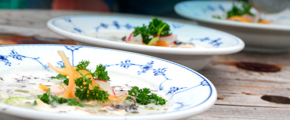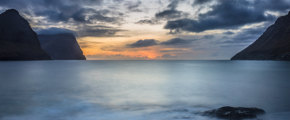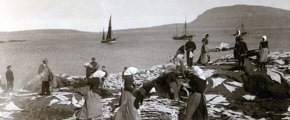Blue ling
Similar to the common ling in shape and appearance, the blue ling is quite distinct in taste and texture. It gets its name from its blue-gray tinge of the skin. The taste of the lean and finely textured blue ling can vary in strength, but generally goes well with other strong flavours.
Blue ling is a type of ling fish, which are part of the codfish family.
Like cod, ling have a firm and textured meat, but their taste is significantly stronger. Their tender meat and more robust taste make them ideal for soups and curries.
Blue ling is a very lean fish, so using wet cooking methods is suitable, to prevent overcooking. Even so, blue ling is highly versatile and can be braised, brined, poached, sautéed and deep fried with excellent results.
The blue ling is rich in protein and vitamins A and B.
Biology
Like most types of ling, the blue ling (Molva dypterygia) has an elongated shape and a small head. In Faroese the blue ling is called blálonga.
Its eyes are quite large and it has big sharp teeth. The blue ling has a dark brownish grey colour on its back that goes down the sides in stripes or spots and its stomach is a light blue-grey. The blue Ling has a blue hue all over their skin, also with a bronze-like shimmer.
Like the common ling, the blue ling has a distinct chin barbel ”beard”, but the chin barbel of the blue ling is quite shorter than the common ling’s chin barbel.
Blue ling can grow up to 155 cm in length, but are most commonly 70-110 cm long when caught. The roe fish grows faster than the milter.
Blue ling have two dorsal fins. The front dorsal fin is short and close to the head. The back dorsal fin is long and goes all the way back to the tail. Blue ling have one posterior fin that runs from the tail to around mid-stomach. Their fins are distinguishable by a white stripe on the upper ridge and a dark spot on the back end. Even the tail fin has a dark outer ridge.
The blue ling is a demersal fish that prefers a muddy seabed and murky waters. They can be found down to depths of 1500 metres, but around the Faroe Islands they will normally keep to a depth of between 300 and 800 metres. They eat crustaceans and other fish, including flatfish, gobies and rocklings.
Blue ling occur all across the Mediterranean Sea and along the western coast of Europe. They are also found in the North Atlantic, including around the Faroe Islands and in the Norwegian Sea.
The Faroe Islands mostly fish for blue ling in Faroese waters and Faroese vessels use bottom trawls and long lines to fish for them.




